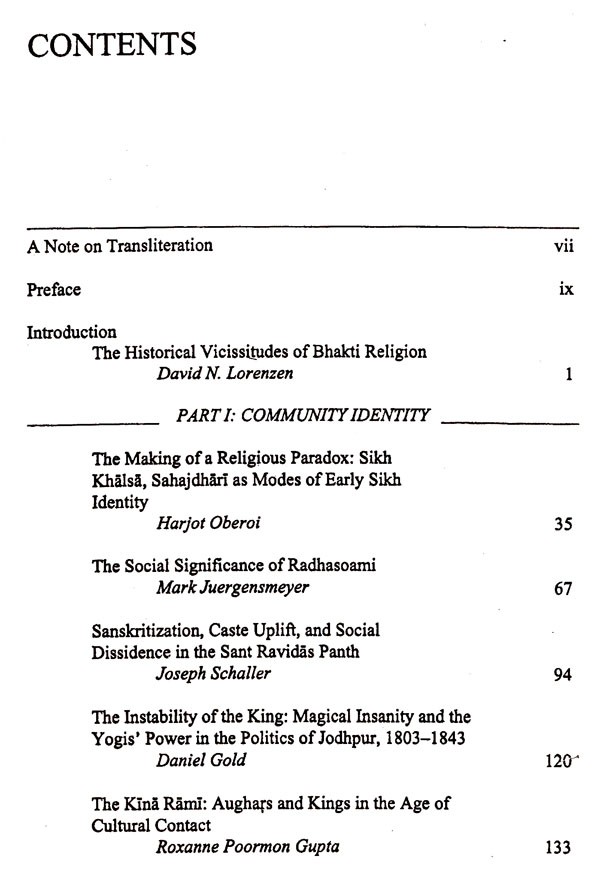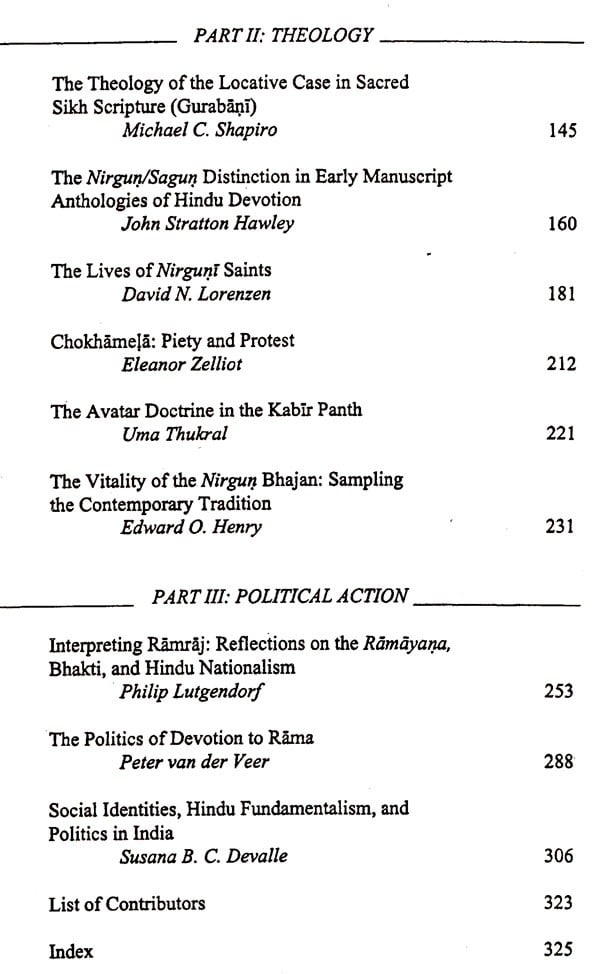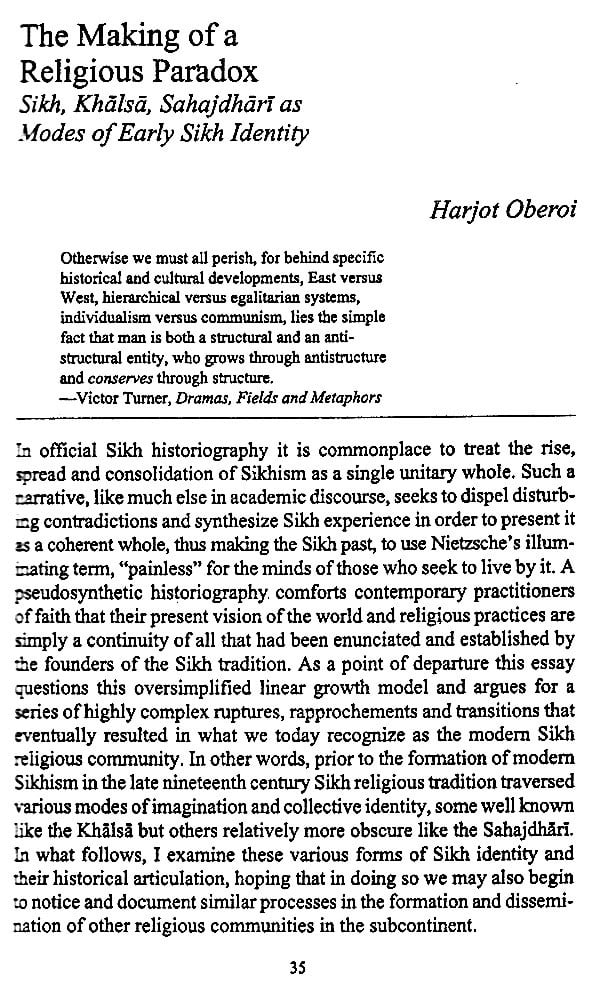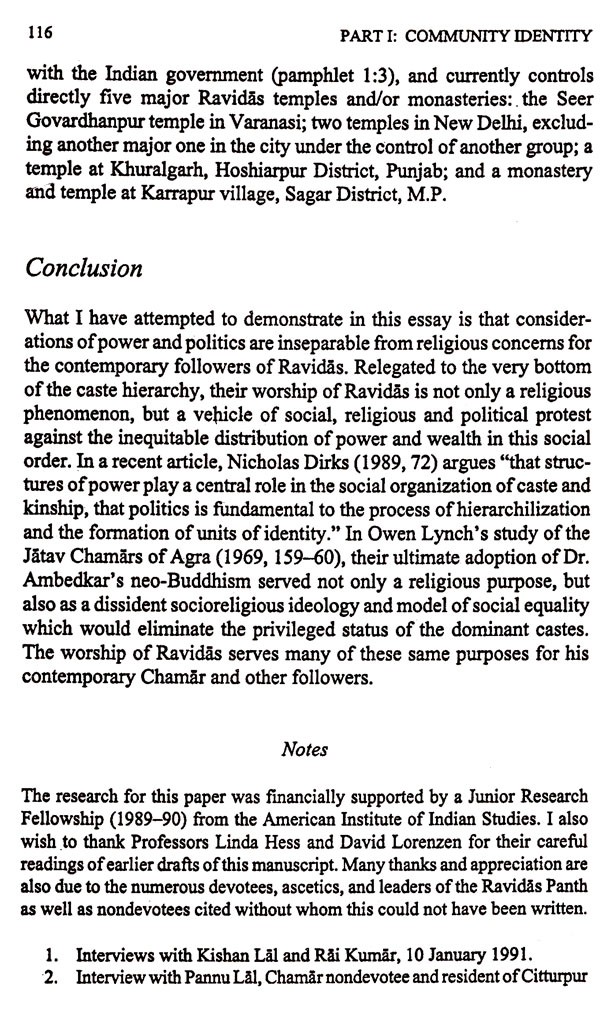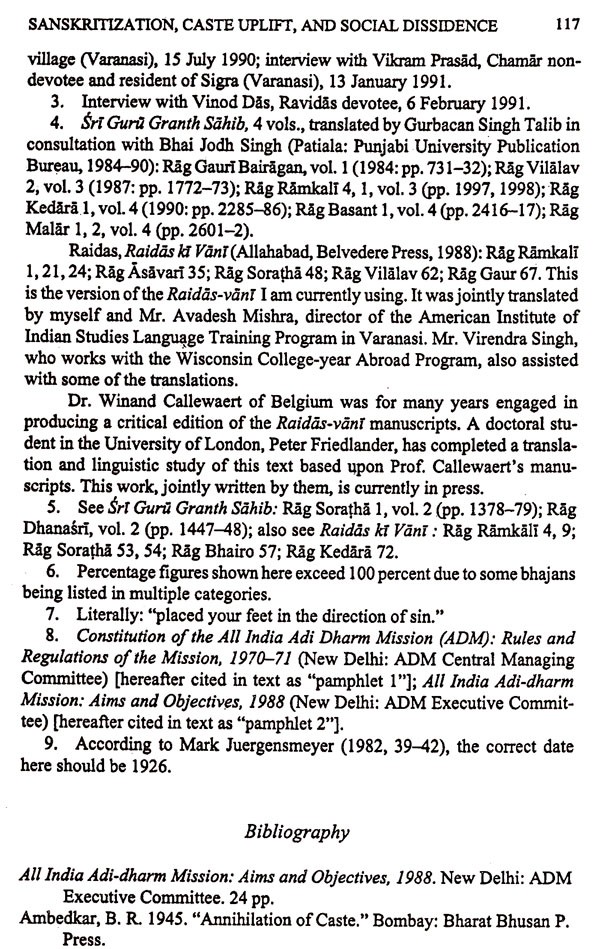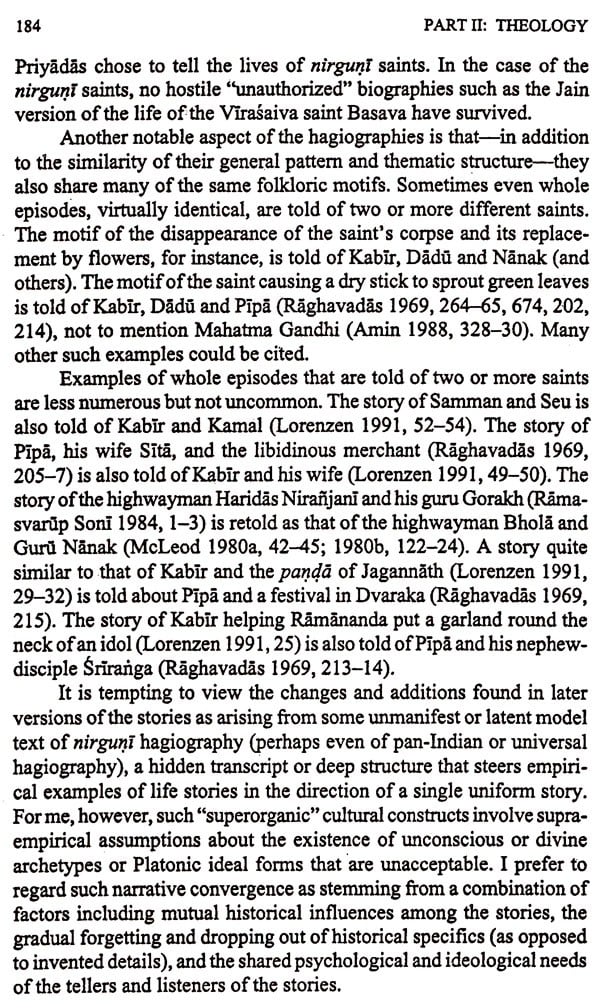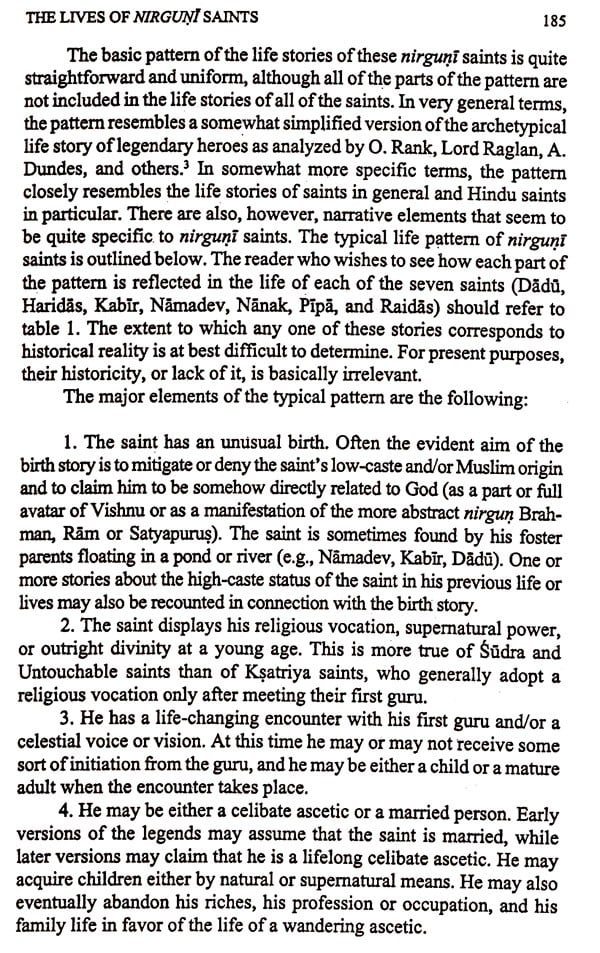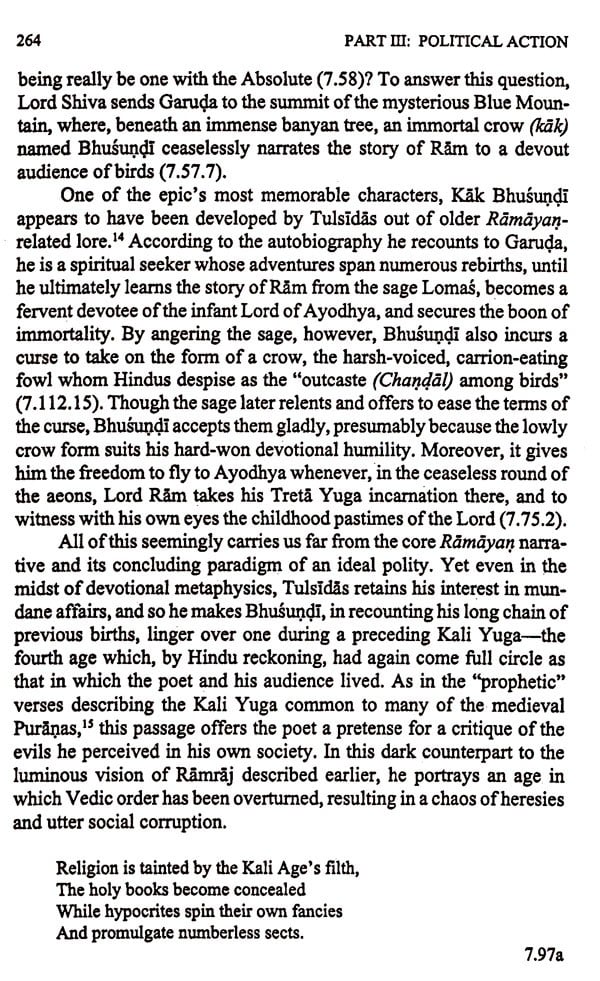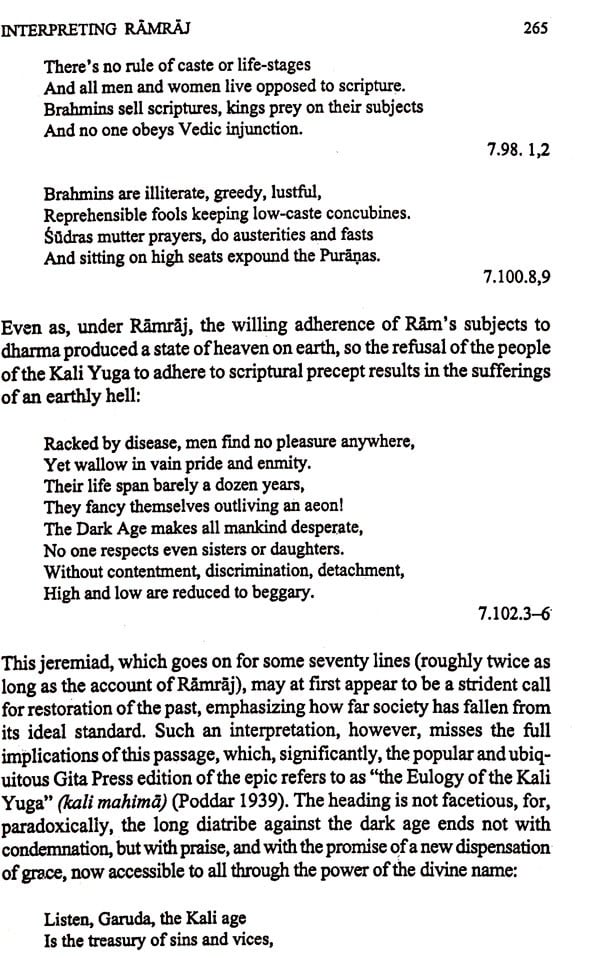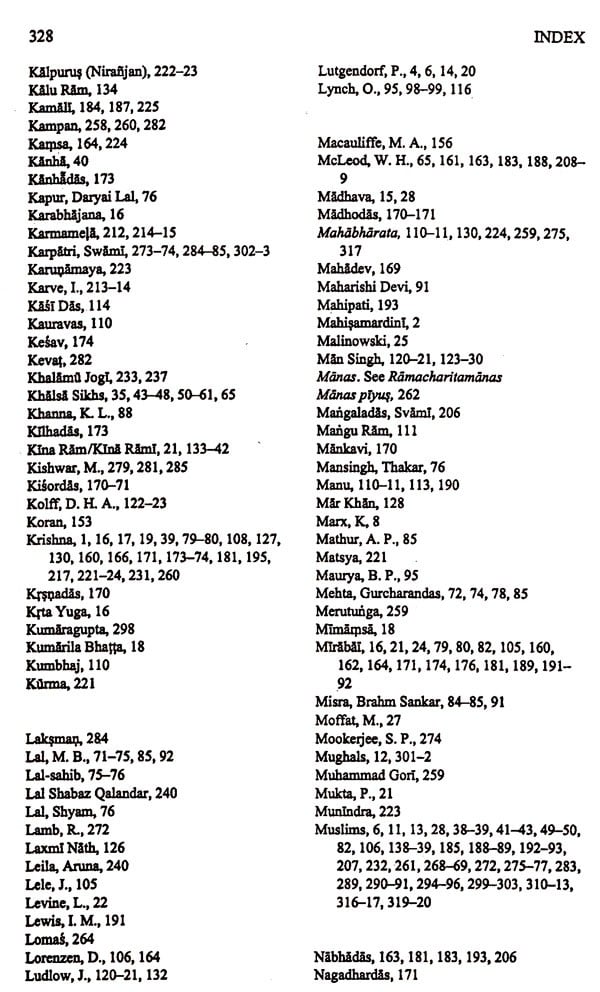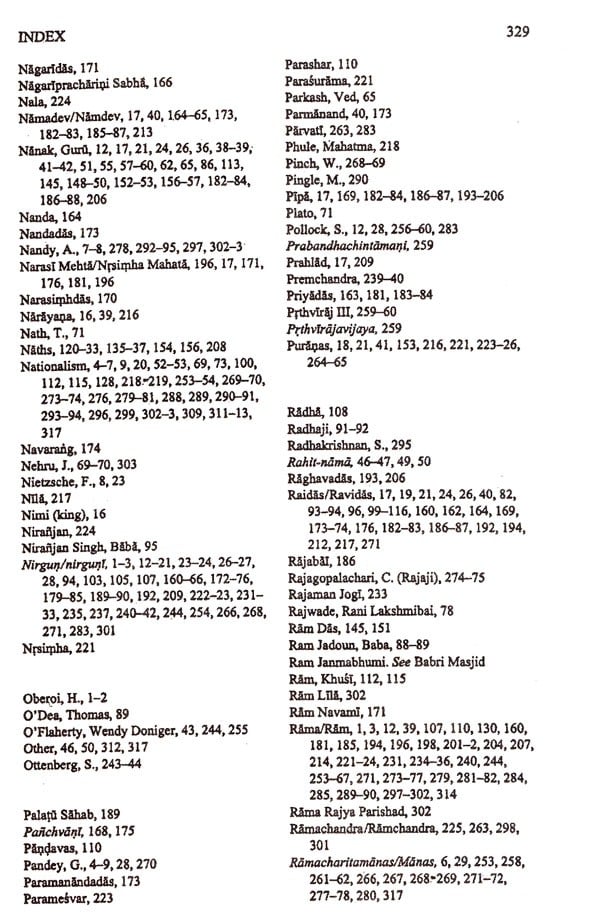
Bhakti Religion in North India (Community Identity and Political Action)
Book Specification
| Item Code: | NAZ924 |
| Author: | David N. Lorenzen |
| Publisher: | Manohar Publishers and Distributors |
| Language: | ENGLISH |
| Edition: | 2021 |
| ISBN: | 9788173041716 |
| Pages: | 342 |
| Cover: | HARDCOVER |
| Other Details | 9.00 X 6.00 inch |
| Weight | 360 gm |
Book Description
In India, religion continues to be an absolutely vital source for social as well as personal identity. All manner of groups - political, occupational, and social - remain grounded in specific religious communities. This book analyses the development of the modern Hindu and Sikh communities in north India starting from about the fifteenth century when the dominant bhakti tradition of Hinduism became divided into two currents: the saguni and the nirguni.
The saguni current, led mostly by Brahmins, has remained dominant in most of north India and has served as the ideological base of the development of modern Hindu nationalism. Several chapters explore the rise of this religious and political movement paying particular attention to the role played by devotion to Ram. Alternative trends do exist in saguni tradition, however, and are represented here by chapters on the low-caste saint Chokhamela and the tantric sect founded by Kina Ram.
The nirguni current, led mostly by persons of Ksatriya and artisan castes, formed the base of both the Sikh community, founded by Guru Nanak and of various non-Brahmin sectarian movements derived from such saints as Kabir, Raidas, MAO, and Shiv Dayal Singh. Two chapters discuss the formation of distinctive Sikh theology and a Sikh community identity separate from that of the Hindus. Other chapters discuss the validity of the saguni-nirguni distinction within Hindu tradition and the interplay of social and religious ideas in nirguni hagiographic texts and in sectarian movements such as the Adi Dharma Mission and the Radhasoami Satsang.
David N. Lorenzen is the author of Kabir Legends and Anata Das's Kabir Parachai, also published by SUNY Press.
The essays in this volume all discuss aspects of medieval and modern Hinduism and Sikhism in North India. All are by scholars working in North American universities. Although this is obviously a vast field of study, the number of scholars working in it in North American universities is still relatively small, even compared to the limited number of scholars working in the related fields of classical and Vedic Hinduism, Tantric religion, and South Indian Hinduism. The scholarly balance between these fields, however, does seem to be gradually coming more into line with their actual historical, religious and social importance.
I was particularly pleased, therefore, when El Colegio de Mexico and the National Council for Science and Technology of the Mexican government agreed to sponsor a symposium on Popular Religion and Sociopolitical Dissidence in North India, held in Mexico City in May, 1991. This symposium brought together a dozen senior scholars working on this field in American, Canadian and Mexican universities, as well as several younger scholars and graduate students. Many of the essays in this book grew out of the papers and discussions of this symposium.
Given the varied nature of the research projects of the scholars working in this field in North America, the topics discussed in this book are necessarily varied. All the essays do, however, address the basic problems of the formation of socio-religious identity and difference in North India and of the nature of the ensuing conflicts between Hindus, Sikhs, and Muslims that are daily tearing Indian society apart. As a result, the post-independence Indian state has been forced to resort to ever more desperate efforts to save its administrative structure and territorial unity.
**Contents and Sample Pages**